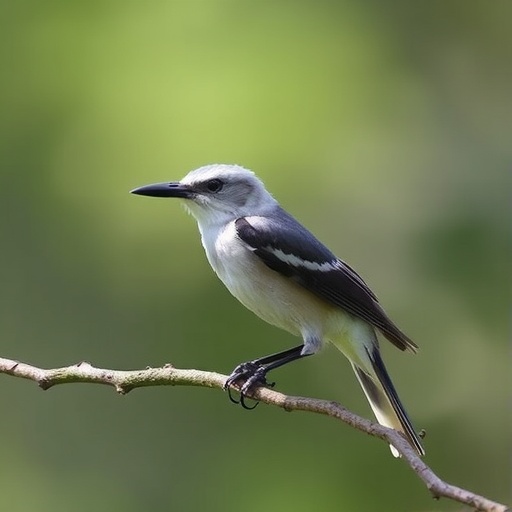The survey performed by Ghaemitalab, Aliabadian, and Mirshamsi employed molecular diagnostic techniques to capture a precise snapshot of haemosporidian infection across multiple bird species inhabiting diverse ecological niches. By analyzing DNA extracted from blood samples, the researchers achieved a level of resolution unattainable with traditional microscopy, allowing for accurate parasite identification even in subclinical infections. This molecular approach reveals not only infection presence but also fine-scale genetic diversity within parasite lineages, providing insight into transmission pathways and coevolutionary dynamics.
.adsslot_527Ngtkozn{ width:728px !important; height:90px !important; }
@media (max-width:1199px) { .adsslot_527Ngtkozn{ width:468px !important; height:60px !important; } }
@media (max-width:767px) { .adsslot_527Ngtkozn{ width:320px !important; height:50px !important; } }
ADVERTISEMENT
One of the pivotal findings of the study lies in the differential prevalence of haemosporidians correlating strongly with environmental parameters including altitude, humidity, and temperature variances. Lower elevations with warmer climates exhibited significantly higher infection rates, likely reflecting increased vector activity and abundance under such conditions. Conversely, harsher conditions at higher altitudes appeared to suppress both vector populations and parasite transmission, emphasizing the critical role of abiotic factors in governing host-parasite interactions.
Host migration emerges as another central factor influencing haemosporidian prevalence and distribution patterns. Migratory birds, traversing vast geographic regions during annual cycles, may act as carriers transporting parasites across ecological barriers, thereby altering local parasite assemblages. The study’s molecular data illustrated that migratory species harbored a more diverse array of haemosporidian lineages compared to resident birds, indicating that migration facilitates gene flow among parasite populations and possibly introduces novel infections to resident communities.
Intriguingly, the study also examined temporal dynamics by sampling during different migration periods and seasons, revealing fluctuations in prevalence linked with host movement and vector seasonality. Spring migration was marked by a surge in infection rates, coinciding with peak vector population expansions, while autumn declines suggested constraints related to environmental conditions and host immune status. These temporal patterns emphasize the complexity of parasite transmission cycles and the necessity of longitudinal surveillance to capture dynamic epidemiological processes.
Another remarkable aspect of this investigation is its integration of geographic information systems (GIS) and ecological modeling, enabling the projection of haemosporidian prevalence hotspots and the identification of key environmental predictors. These spatial analyses provide valuable tools for predicting future shifts in disease landscapes, particularly in the face of accelerating climate change, habitat modification, and anthropogenic pressures that could alter vector distributions and host migration routes.
Importantly, the study underscores the necessity of multidisciplinary approaches combining field ecology, molecular biology, climatology, and spatial analytics to unravel the multifaceted drivers of infectious disease dynamics. In regions like Southern Iran, characterized by diverse habitats and complex migratory pathways, this integrative strategy proves crucial for capturing the nuanced interplay among parasites, hosts, and environments.
Future research directions prompted by these findings include exploring the mechanistic underpinnings of vector ecology in response to microclimatic variations, the immunogenetics of host susceptibility, and the potential effects of anthropogenic landscape changes on disease transmission networks. Long-term monitoring is essential to detect shifts in infection patterns that may arise from global phenomena such as climate warming, altering both host phenology and vector phenology in unpredictable ways.
Subject of Research: The impact of environmental factors and host migration on the prevalence of avian haemosporidian parasites in Southern Iran.
Article Title: The Impact of Environmental Factors and Host Migration on Avian Haemosporidians Prevalence: A Molecular Survey in Southern Iran.
Article References:
Ghaemitalab, V., Aliabadian, M. & Mirshamsi, O. The Impact of Environmental Factors and Host Migration on Avian Haemosporidians Prevalence: A Molecular Survey in Southern Iran. Acta Parasitologica 70, 173 (2025). https://doi.org/10.1007/s11686-025-01106-y
Image Credits: AI Generated
Tags: avian ecologyblood parasites in birdsclimatic factors and disease dynamicsecological interactions and health impactsenvironmental impact on parasitesglobal environmental change effects on wildlifehaemosporidian infectionsmigratory behavior of birdsmolecular survey of bird parasitesprotozoan parasites in birdsSouthern Iran avian researchvector-borne diseases in wildlife





